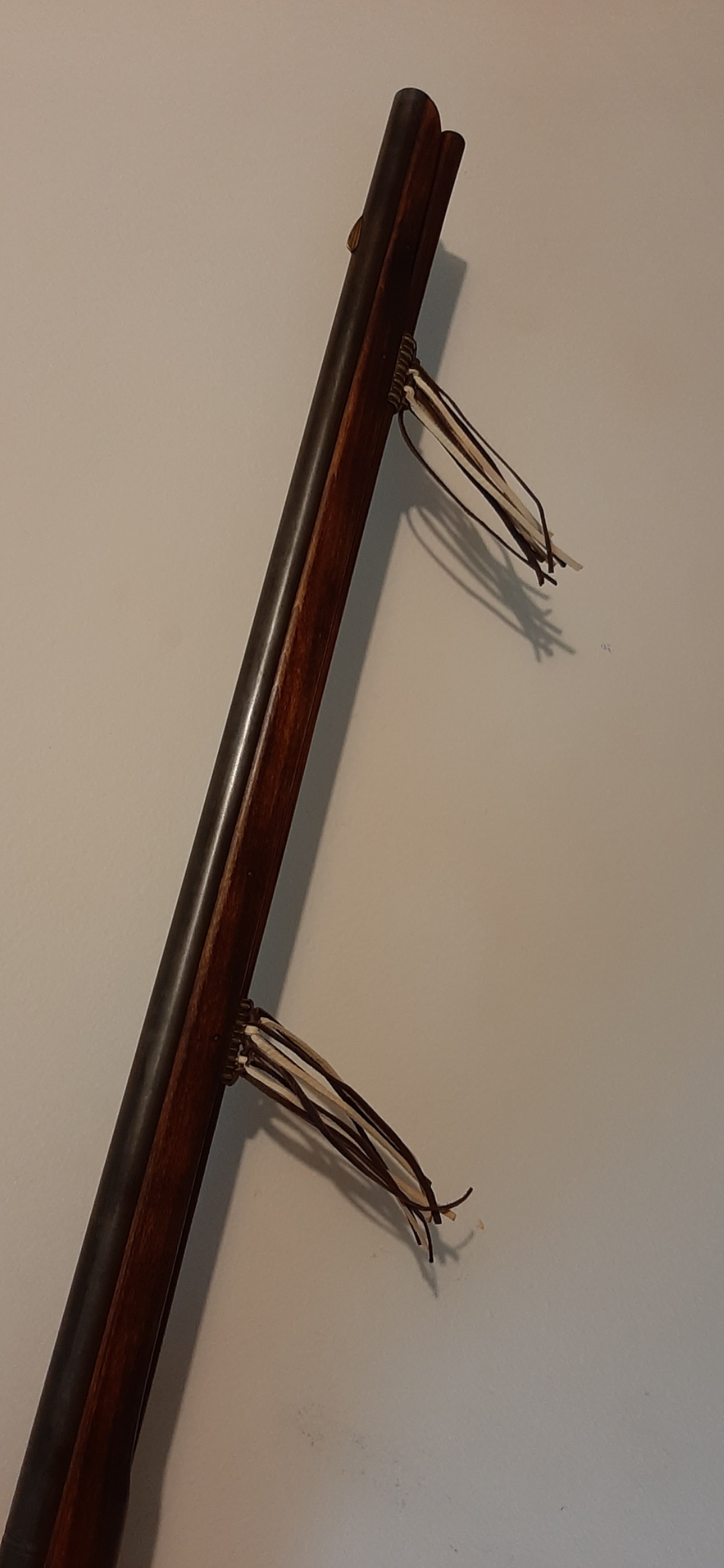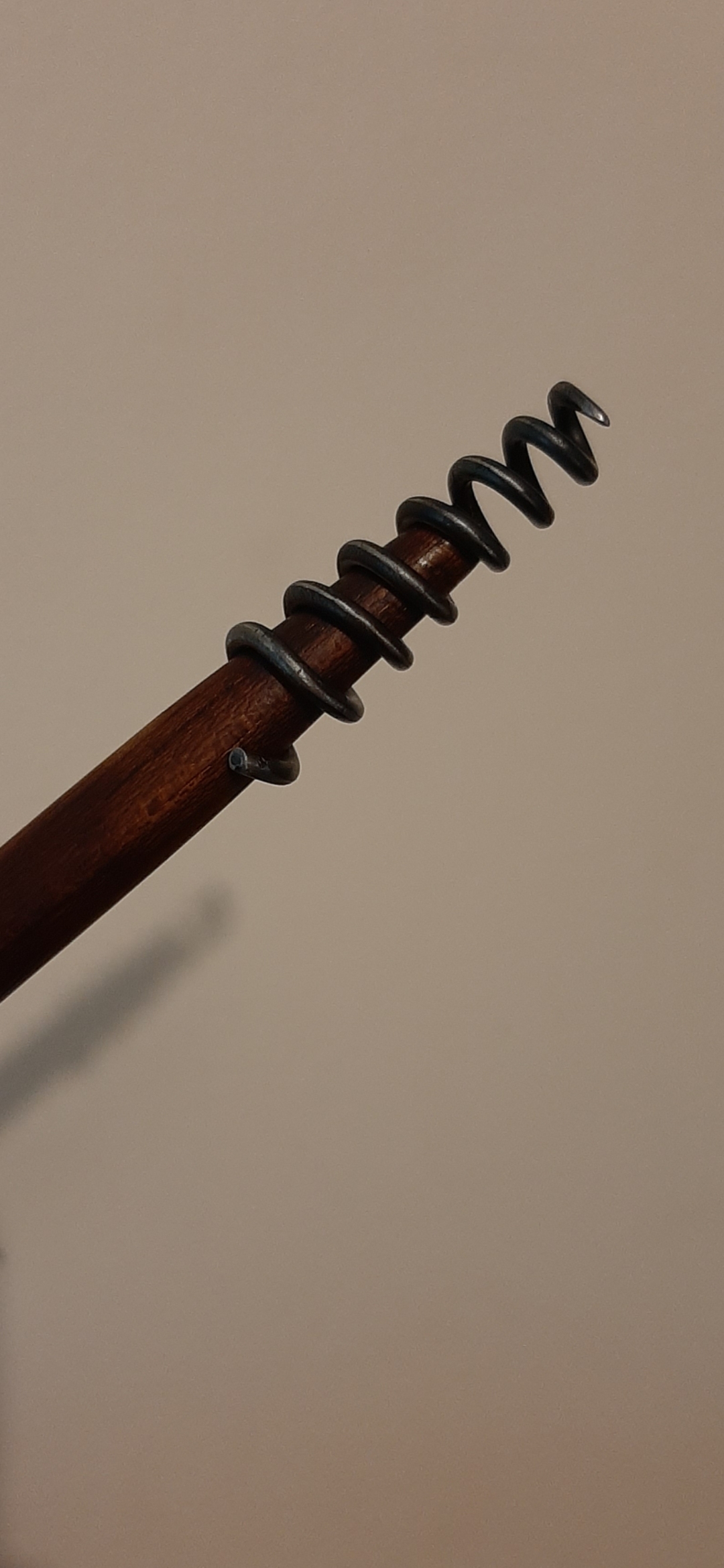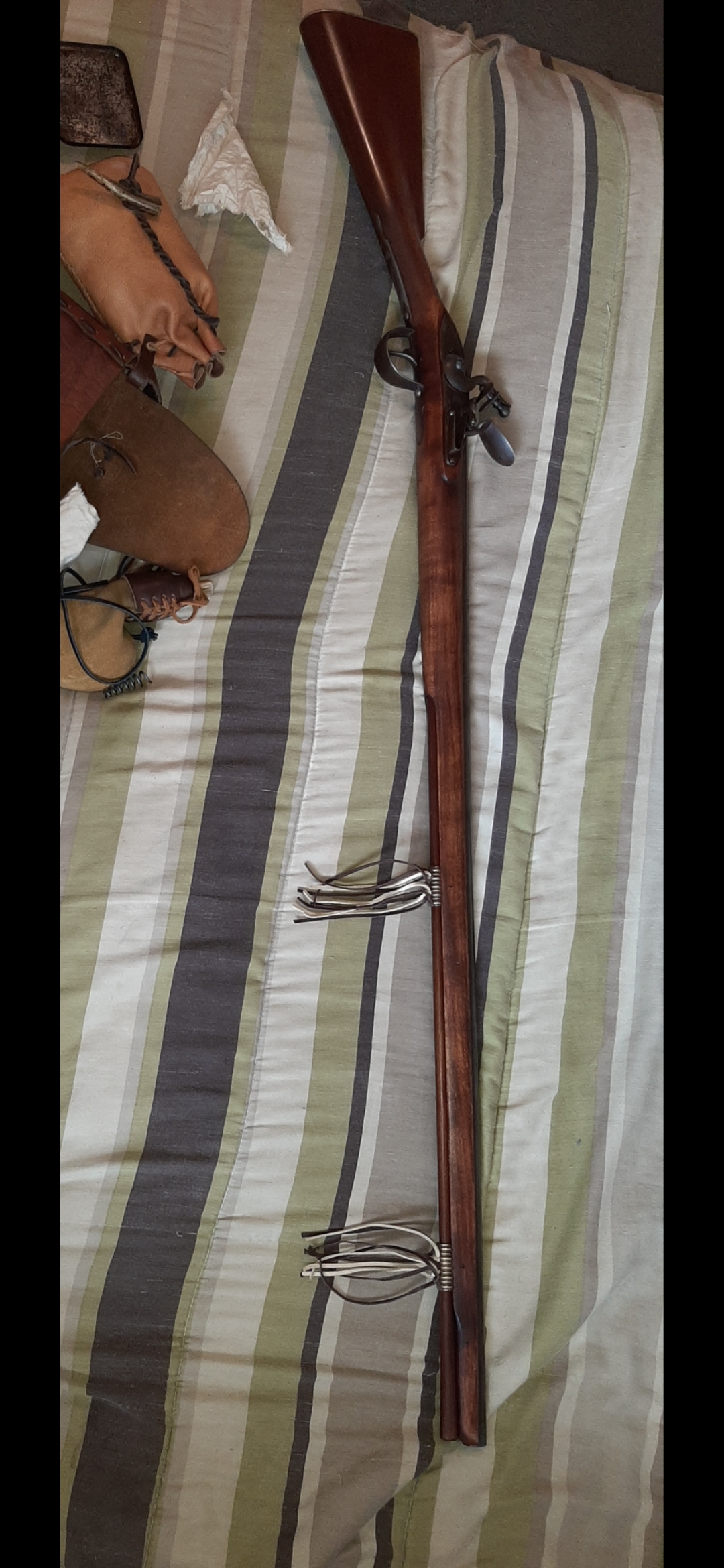You did a nice job on that ramrod, Runewolf. Sometimes I think tapered ramrods are on their way to becoming a forgotten art. There are a lot of ways to do it. I have a four foot piece of pine tongue-and-groove lumber that I clamp horizontally in a vise with the groove side up. I put pencil marks on the rod, close together in the regions that need to be tapered and farther apart on the main body of the rod that just needs to be reduced in diameter. The marks are "rings" that go around the circumference of the rod. I lay the rod in the groove, and start shaving off pencil marks with a low angle block plane. The pencil marks help ensure uniform removal of stock, and need to be renewed as you go. From there, it's just a matter of time. It takes me at least an hour to taper and take down the diameter of a 42" rod, but I like working with hand tools and enjoy the process. It makes a shoebox full of fine, curly shavings that are good for fire starting. There are probably faster ways to do it, but what's time to a piece of wood?
I would be interested in knowing how you tapered your rod... It turned out very well. You got a good color and finish on it, too. There have been a couple of threads on this and other forums recently about problems staining hickory. My dad used nitric acid (aqua fortis) for hickory rods, and neutralized it with ammonia when he achieved the color he wanted. I did a couple that way when I was much younger, but recent projects were stained with Laurel Mountain Forge Nut Brown stain followed by Permalyn finish, or for a strictly utilitarian rod, I just treat it with Danish Oil and don't worry about it. I've been thinking of getting some nitric acid and ammonia, and trying Dad's method again. Just need to do it.
Regarding the patch staying on the jag, friction keeps it in place if the jag is sized properly. Commercial brass jags are sized about 0.040" under bore diameter for rifles (land to land), and I think this is a good rule of thumb. I have a Kleen-Bore 20 gauge jag for modern guns that is more like 0.050" under bore size, probably to fit through a choked bore, but it works on my muzzle loaders well enough. The Kleen-Bore jag has a little pointy projection on the end to retain the patch, if you're worried about it coming off, although I managed to bash the pointy thing flat against the breech plug face of my fowling piece and finally just filed it off. The jag works fine for me without it.
Again, you showed good workmanship on that rod, and I want to commend you for keeping the "dying art" of making tapered ramrods alive.
Notchy Bob
I would be interested in knowing how you tapered your rod... It turned out very well. You got a good color and finish on it, too. There have been a couple of threads on this and other forums recently about problems staining hickory. My dad used nitric acid (aqua fortis) for hickory rods, and neutralized it with ammonia when he achieved the color he wanted. I did a couple that way when I was much younger, but recent projects were stained with Laurel Mountain Forge Nut Brown stain followed by Permalyn finish, or for a strictly utilitarian rod, I just treat it with Danish Oil and don't worry about it. I've been thinking of getting some nitric acid and ammonia, and trying Dad's method again. Just need to do it.
Regarding the patch staying on the jag, friction keeps it in place if the jag is sized properly. Commercial brass jags are sized about 0.040" under bore diameter for rifles (land to land), and I think this is a good rule of thumb. I have a Kleen-Bore 20 gauge jag for modern guns that is more like 0.050" under bore size, probably to fit through a choked bore, but it works on my muzzle loaders well enough. The Kleen-Bore jag has a little pointy projection on the end to retain the patch, if you're worried about it coming off, although I managed to bash the pointy thing flat against the breech plug face of my fowling piece and finally just filed it off. The jag works fine for me without it.
Again, you showed good workmanship on that rod, and I want to commend you for keeping the "dying art" of making tapered ramrods alive.
Notchy Bob











